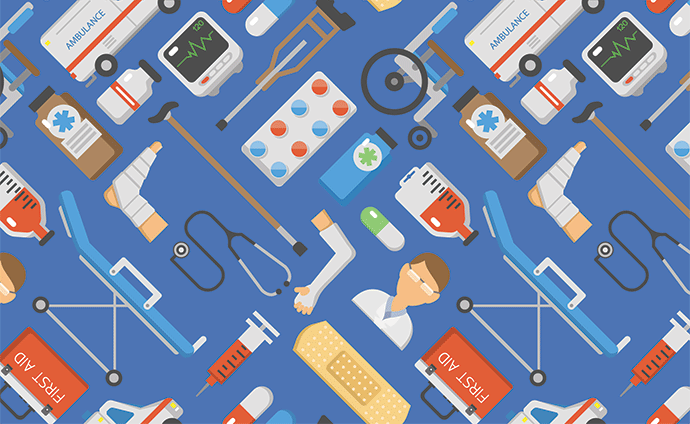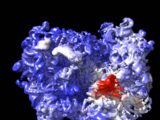
Health IT (health information technology)
July 22, 2021The design, development, implementation, usage, and maintenance of information systems for the healthcare business is known as health IT (health information technology). Healthcare information systems that are automated and interoperable will continue to improve medical care and public health, while also lowering costs, increasing efficiency, reducing errors, and improving patient satisfaction, as well as optimising reimbursement for ambulatory and inpatient healthcare providers. The importance of health IT now stems from a mix of improving technology and shifting government policies that have an impact on patient care quality.
Table of Contents
Health information technology comes in a variety of shapes and sizes.
The electronic health record (EHR) is at the heart of the health IT system. An EHR, often known as an electronic medical record (EMR), is a person’s official digital health record that is shared among various healthcare providers and institutions. The personal health record (PHR), which is a person’s self-maintained health record, and the health information exchange (HIE), which is a health data clearinghouse or a group of healthcare organisations that enter into an interoperability pact and agree to share data between their various health IT systems, are also important components of the health IT infrastructure. PHRs will become more common in the coming years as people get more comfortable with their digital health information, thanks to smartphones and other mobile devices. As a result, PHRs will need to interface with EHR technology even more.

Data analytics has become more important in day-to-day operations as a result of the mountain of patient data that healthcare companies currently hold. Population health management (PHM) and value-based healthcare both benefit from the ability to aggregate patient data, analyse it, and then treat patients based on the findings. Although, as of 2018, AI is not used for diagnosis, artificial intelligence will take analytics to a new level. Analytics also raises the topic of data ownership: who owns the data: the patient, the healthcare company, or the analytics software vendor? According to current healthcare trends, patients will eventually become the proprietors.
EHRs aren’t the only important health IT technology. Picture archiving and communication systems (PACS) and vendor-neutral archives (VNAs) are two common types of health IT that assist healthcare workers in storing and managing medical images. Previously, radiology departments served as the primary repository for medical pictures, but PACS and VNAs are now integrating radiology into the whole hospital workflow. Other specialities, such as cardiology and neurology, have also grown into large-scale clinical picture producers. VNAs have been used to integrate imaging data held in distinct departments’ image banks in a multi-facility healthcare system in some cases.
Patient portals, which aren’t new but are getting a second wind at hospitals and physician practises thanks to more consumer-friendly designs, are one example of advancements in health technology. A patient portal used to be a clunky website that allowed patients to view future appointments and possibly see raw lab test results. Modern portals, on the other hand, add greater context to a patient’s care. Patients can use the portals to securely connect with their doctors, pay bills, compare treatments to what their insurance plans cover, download full medical records, purchase medicines, and possibly interact with a chatbot for additional services.
Telemedicine systems, which enable secure video chats between patients and clinicians, may also be integrated with portals. Telemedicine will become a significant part of the healthcare experience as video conferencing becomes easier and more convenient for patients who may need to speak with a physician or nurse face-to-face but do not require an in-office visit.
Recent advancements in health IT technology include increased usage of application programme interfaces (APIs) to promote interoperability, the ability to access and interact with health data via mobile devices, and more research into blockchain as a mechanism to better access and safeguard medical records.
Oversight and regulations
Since the passage of the Health Information Technology for Economic and Clinical Health (HITECH) Act in 2009, which established EHR incentive programmes and the related meaningful use programme, EHR system implementations have risen rapidly in recent years. Physicians and hospitals who demonstrated that their use of government-certified EHR systems met meaningful use criteria, as defined by the Centers for Medicare & Medicaid Services (CMS) and the Office of the National Coordinator for Health IT (ONC), were eligible for incentive payments totaling tens of billions of dollars across the United States’ healthcare industry.
MACRA, the Medicare Access and CHIP (Children’s Health Insurance Program) Reauthorization Act, passed Congress in 2015 and replaced meaningful use with a new value-based compensation system. Meanwhile, the 21st Century Cures Act of 2016 invested $6 billion in medical research based on cutting-edge science and technology.
Furthermore, healthcare organisations and their business associates that handle protected health information (PHI), such as third-party billing companies, are subject to the Health Insurance Portability and Accountability Act (HIPAA), which was created and is enforced by the US Department of Health and Human Services (HHS). Patients must have full access to their PHI under the legislation, which also safeguards their privacy by limiting other parties’ access to data. The HHS Office for Civil Rights can punish a healthcare provider who has a breach of PHI (OCR).
Privacy and security
The HIPAA security and privacy guidelines have long directed healthcare institutions in providing patients with access to their medical records while also ensuring that the information is kept secure. Given the prevalence of data breaches and malware attacks in the healthcare business since 2010, such goals have become more urgent. According to a 2018 research by Protenus, a health IT privacy and security provider, about 5.6 million patients’ records were breached in 2017, and while the number of patient data breaches decreased that year, malware and ransomware attacks on healthcare sites surged. As a result, traditional health information technology systems are increasingly integrating with data security and cybersecurity technology. Human errors can lead to data breaches, thus worker education is also a component of the solution.
Workforce transformations
IT managers and chief information officers (CIOs) in healthcare firms have gained in power, as they have in many other industries, as technology has become more common. The rise of the informatician, or informaticist, is linked to the growth of health information technology. Professionals in health informatics and its variants work collaboratively to handle and study health IT and patient data. Informaticians may have an IT or clinical background, but they blend research, medical treatments, and technology in both cases. A clinical informaticist, for example, may have worked as a bedside nurse before transitioning to an IT-based position. There is also a subset of practising physicians and nurses who have advanced their knowledge of health IT and patient data. Despite the fact that these physicians are still deeply involved in patient care, they are better able to communicate with IT about their needs and the technology solutions available.
Health IT has impacted every physician who has received training on an EHR or telemedicine system, and working with this technology has become a core job skill.
Health information technology’s advantages
While some detractors claim that EHRs have caused practitioners to spend more time inputting data than interacting with patients and have resulted in onerous federal rules, the benefits of health IT are widely acknowledged. These benefits include the ability to use data analytics and big data to effectively manage population health management programmes and reduce the incidence of costly chronic health conditions; the ability to perform precision medicine (PM) tailored to individual patients using cognitive computing and analytics; and the ability to share health data among academic researchers to develop new medical therapies.
Other health-related IT issues
In the field of health information technology, there are still some significant obstacles to overcome. Interoperability barriers include a lack of widely agreed-upon health data transfer standards, despite the fact that the health IT standard-setting group is working on them. HL7 International (Health Level Seven) has created and published a number of prominent standards, the most current of which being FHIR (Fast Health Interoperability Resources).
Additionally, the claimed practise of information blocking by some vendors and providers in an attempt to hinder the capacity to share health data in their systems has been noted as a persistent concern by government officials and patient groups. Health regulators have made it clear that information blocking would not be tolerated.
Conclusions
Health information technology (HIT) has the potential to alter health care delivery, making it safer, more effective, and efficient. Some companies have already seen significant benefits from using multipurpose, interoperable HIT systems centred on an EHR. However, widespread implementation of HIT has been limited by a lack of generalizable knowledge about what types of HIT and implementation methods will improve care and manage costs for specific health organizations. The reporting of HIT development and implementation requires fuller descriptions of both the intervention and the organizational/economic environment in which it is implemented.
Reference
- Shekelle, P. G., Morton, S. C., & Keeler, E. B. (2006). Costs and benefits of health information technology. Evidence report/technology assessment, (132), 1-71.
2.Jha, A. K., Doolan, D., Grandt, D., Scott, T., & Bates, D. W. (2008). The use of health information technology in seven nations. International journal of medical informatics, 77(12), 848-854.


